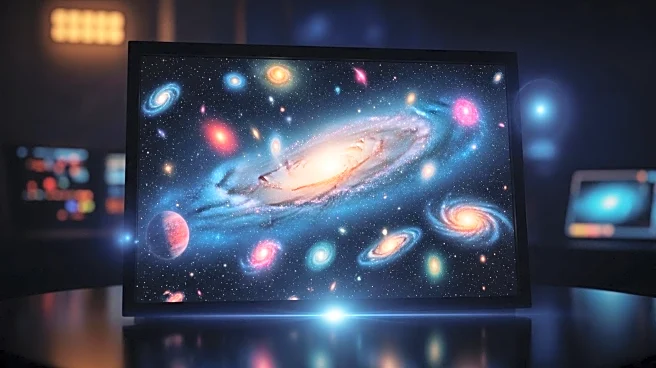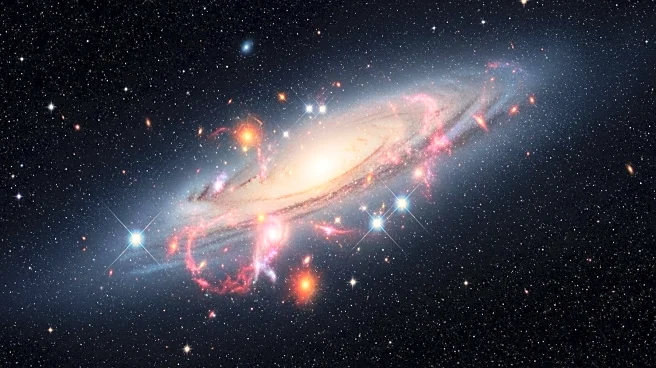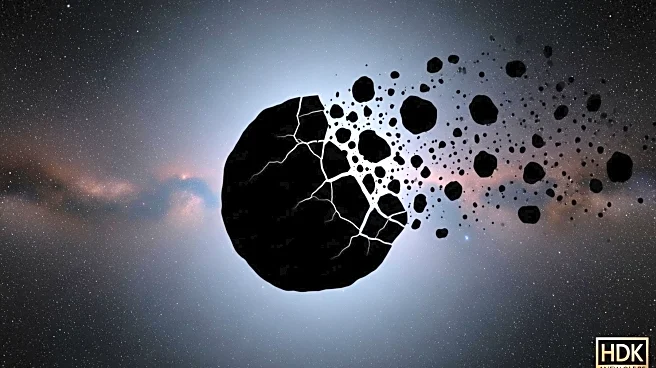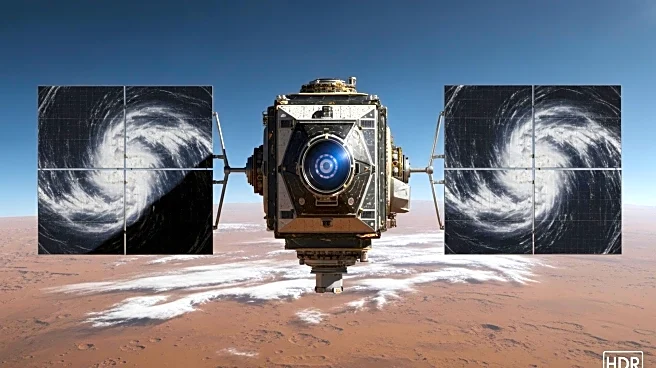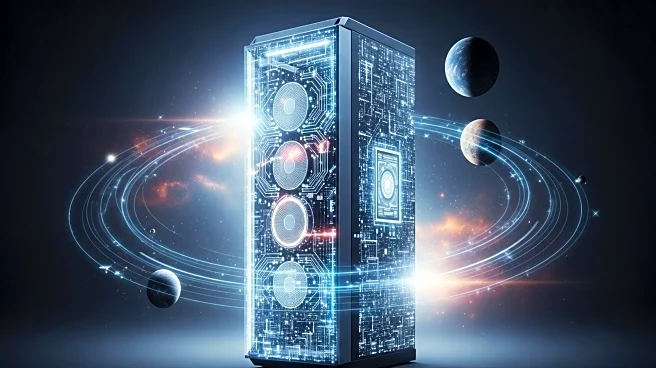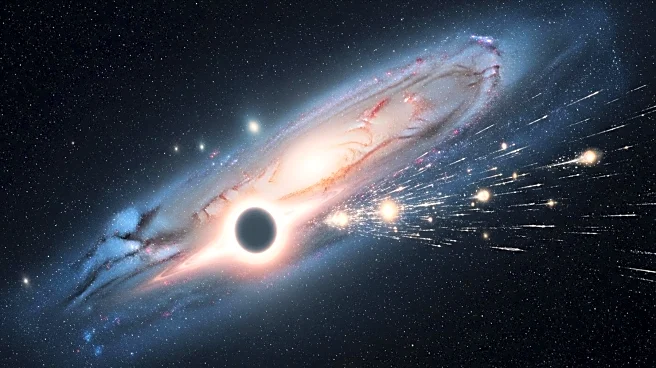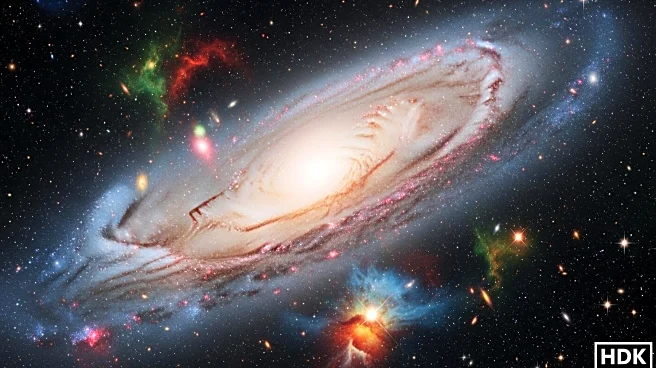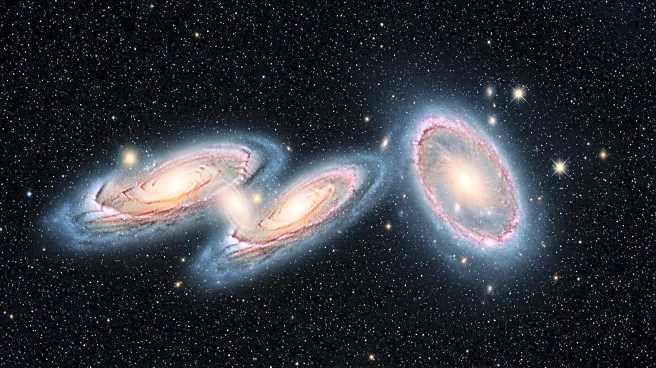What's Happening?
The Euclid Consortium has released the largest-ever simulation of the universe, mapping 3.4 billion galaxies and tracking the gravitational interactions of over 4 trillion particles. Named Flagship 2, the simulation was created using an algorithm designed by astrophysicist Joachim Stadel and run on the supercomputer Piz Daint. The simulation is crucial for preparing the analysis of data from the European Space Agency's Euclid space telescope, which is mapping billions of galaxies to study dark energy and dark matter. The project aims to challenge current cosmological models and explore the mysteries of the universe.
Why It's Important?
The release of Flagship 2 represents a significant advancement in cosmological research, providing a detailed virtual model of the universe for scientific study. The simulation aids in the analysis of Euclid's data, which could reveal new insights into the nature of dark energy and dark matter. Understanding these forces is essential for developing comprehensive models of the universe's composition and evolution. The project also highlights the role of advanced technology and international collaboration in pushing the boundaries of astrophysical research.
What's Next?
Researchers will use the simulation to analyze Euclid's observational data and explore potential discrepancies with the standard cosmological model. The findings may lead to revisions of existing theories and provide new insights into the universe's expansion and composition. The Euclid space telescope will continue to collect data, with the next publication of data sets scheduled for spring 2026. The project aims to uncover the fundamental nature of dark energy and its role in the universe's evolution.
Beyond the Headlines
The simulation underscores the importance of computational power and advanced algorithms in modern astrophysics. It also highlights the potential for simulations to challenge existing scientific paradigms and drive new discoveries. The project reflects the collaborative efforts of scientists worldwide to explore the universe's mysteries and expand our understanding of cosmic phenomena.

